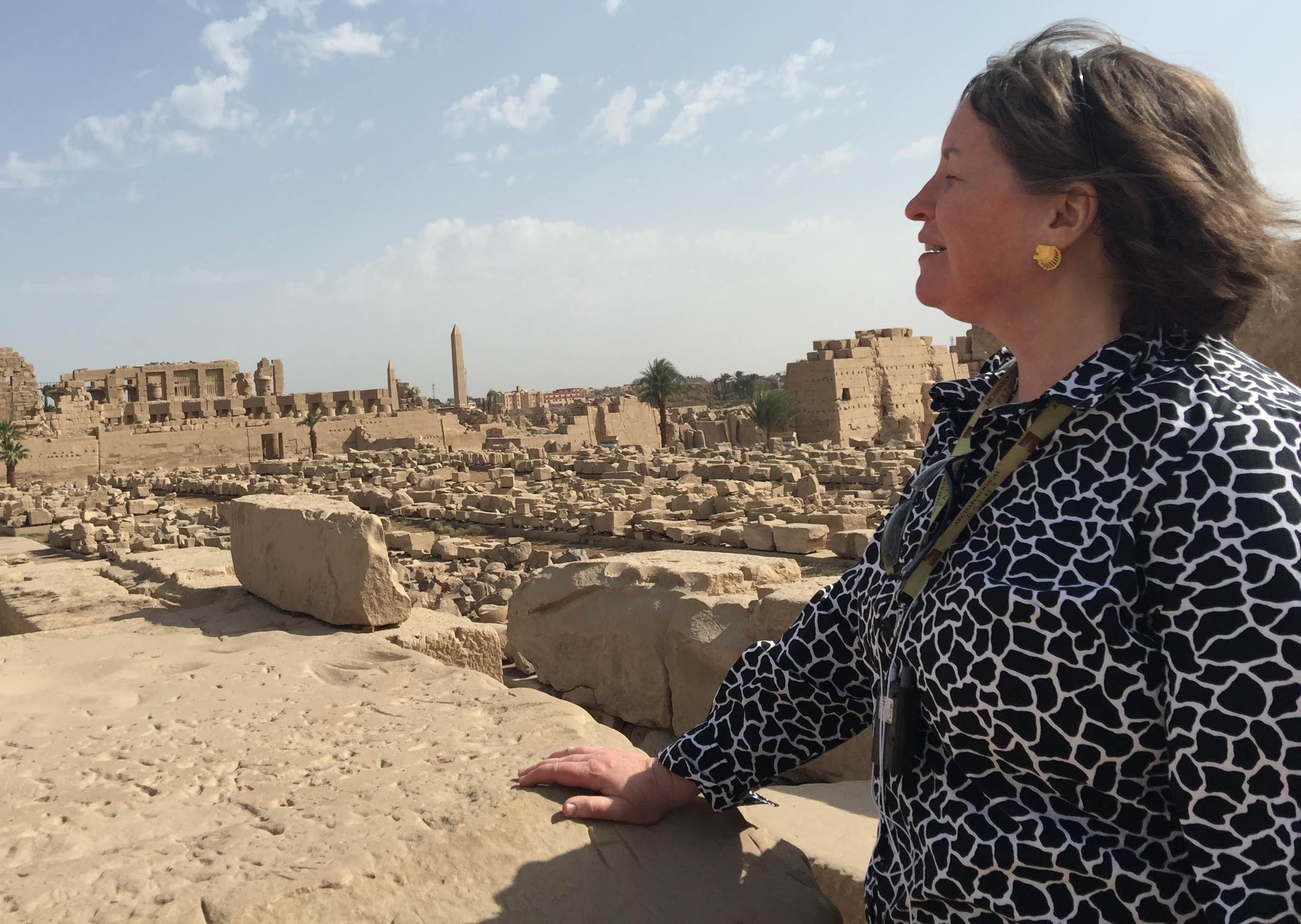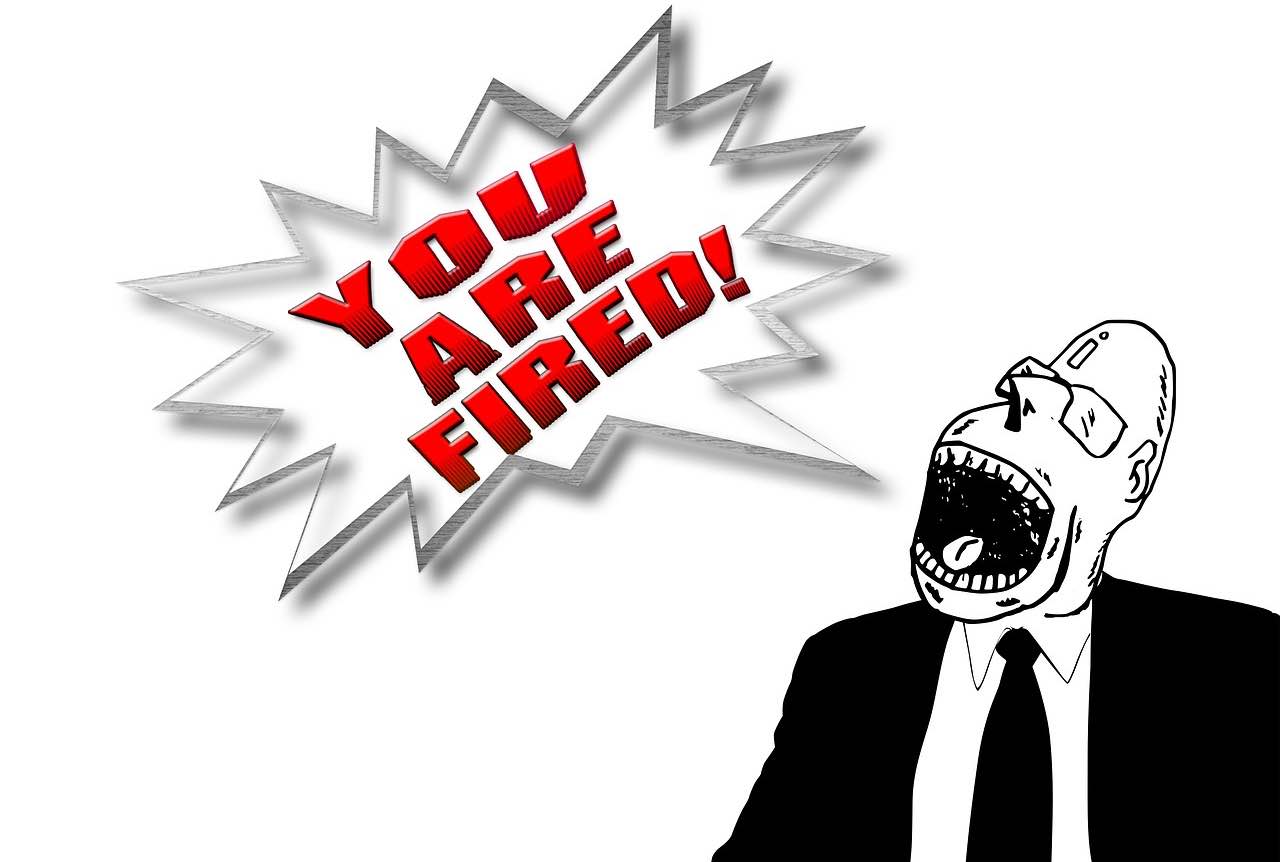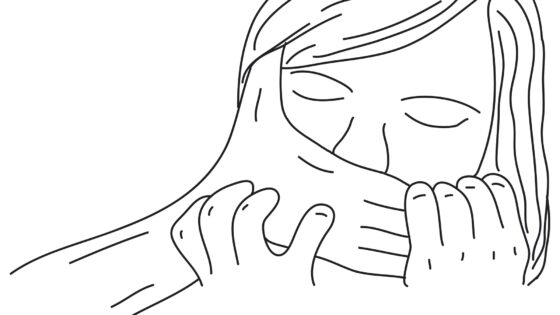The ‘abrasive leader’ or work harasser – Interview Laura Crawshaw – By Laura Quiun – jupsin.com

INTERVIEW | Laura Crawshaw, ‘The Boss Whispering Institute’ founder & President of ‘The Executive Insight Development Group’ in Portland (Oregon)
“Any reasonable person considers work harassment as a destructive behavior”
- «I had two questions: first, why would leaders treat their employees so badly? and secondly, why did companies allow this to continue even after employees reported the abrasive behavior?»
- «When I began my doctoral research into abrasive leaders, all the books I encountered were from the perspective of targets, and the abrasive leaders were described as psychopaths, afflicted with a mental or moral disorder».
- «We need to focus on those who create that suffering, and for that reason, I do not work with targets although I deeply empathize with them. My focus is on the cause of suffering».
- «My message to employers is to understand that it is the employer’s responsibility to provide a physically and psychologically safe workplace. Employers should not be paralyzed by various definitions of bullying but should make their own reasonable decision of whether observed or reported behaviors are unacceptable and disruptive».

Laura Crawshaw: «In 1994, I took a huge step in my career and I established my consulting firm to provide executive coaching».
Laura Quiun: You have had extensive experience working with abrasive leaders over 35 years as a coach. Did your interest in this types of clients start while you were working as a psychotherapist in Alaska?
Laura Crawshaw: Yes, in Alaska I was an Employee Assistance Program counselor. EAPs are employer-sponsored confidential counseling programs that employees can go to when they experience some kind of stress.
I was a counselor and I was there to help them. In Alaska, I did not see leaders very often in the program, but when employees came in and talked about their stress, I expected that the issues would primarily be family, marital, or substance abuse concerns.
Why would leaders treat their employees so badly? Why did companies allow this to continue even after employees reported the abrasive behavior?
What shocked and surprised me was how many employees came to talk about the suffering they experienced at work, suffering caused by perpetrators of workplace bullying, or as I call them, abrasive leaders. That was the beginning of my interest.
As I listened to these individuals, I had two questions: first, why would leaders treat their employees so badly? and secondly, why did companies allow this to continue even after employees reported the abrasive behavior? In 1994, I took a huge step in my career and I established my consulting firm to provide executive coaching.
Soon, companies started referring what they called their “difficult leaders” for coaching. And it turned out these individuals were my greatest teachers because I was able to ask them why they treated their employees so harshly.
LQ: Many victims ask why we are not focusing on fixing the aggressor´s behavior
LC. I really agree with that, because so much of the focus on workplace bullying research has been on the targets and not on the perpetrators. We need to focus on those who create that suffering, and for that reason, I do not work with targets although I deeply empathize with them. My focus is on the cause of suffering.

LQ. Why do you approach these problems from coaching and not from psychotherapy?
LC. I was a psychotherapist, and I learned a lot as a psychotherapist, but when I began working as a coach, I was there to help them see things that they were not able to see and help them to gain insight.
The coaching method is not psychotherapy, it is education, but has two great secrets from psychotherapy
The coaching method is not psychotherapy; it is education. To coach abrasive leaders, one does not need to be a psychotherapist. One needs to be insightful, courageous, and have empathy for the suffering that drives these individuals to become aggressive.
Freud identified the concept of the ego and mechanisms of defense, in which the individual strive to defend against psychological threats to the ego. . The coaches that I train help their abrasive clients see that when they feel threatened, the become anxious and defend against threats to their competence with aggression. This is an educational process, not a psychotherapeutic one. These specialist coaches help the client get curious about why they become defensive and provide these simple constructs to help explain these behaviors

I developed a definition of abrasive behavior in the workplace, which is any behavior that causes emotional distress sufficient to disrupt organizational functioning.
LQ. What is your concept of workplace bullying?
LC. If you look in the research literature there are endless definitions of workplace bullying. I even wrote a paper about it (Workplace Bullying? Mobbing? Harassment? Distraction by A Thousand Definitions, 2009).
I developed a definition of abrasive behavior in the workplace, which is any behavior that causes emotional distress sufficient to disrupt organizational functioning.
I developed a definition of abrasive behavior in the workplace, which is any behavior that causes emotional distress sufficient to disrupt organizational functioning
We’re not talking about an individual who irritates or annoys others; we are talking about the individual who rubs people the wrong way to the point that it is disruptive to organizational functioning. Their behaviors do not simply irritate but wound and disrupt.
I very much admire Australia’s definition of workplace bullying, which defines these as behaviors that any reasonable person would find destructive. And part of my more recent work is asking employers to have the courage to intervene based upon their own reasonable judgment of what is acceptable behavior.
I have found that so many employers hesitate to intervene because they are afraid that the behaviors do not fulfill a legal definition of workplace bullying. Essentially, they become paralyzed.
I want employers to understand that they have the right and responsibility to manage not only performance but also conduct. And I give them criteria for making the determination of whether or not, the behaviors they are experiencing are abrasive.
I asked them to ask the question “Would you want your spouse, partner, daughter, or son subjected to this behavior?” And if the answer is no, then they are looking at abrasive behavior.
At this point in my career, in addition to training coaches in the specialized method I developed for coaching abrasive leaders, I am working to help employers understand their anxieties about intervening and holding employees accountable for acceptable conduct.
I am working to help employers understand their anxieties about intervening and holding employees accountable for acceptable conduct
I’ve developed an online course for them called “Managing Abrasive Workplace Behavior: Growing Management Backbone.”
This brings me back to one of my earliest questions, which was, why employers didn’t do something about abrasive employees? particularly the abrasive leaders in their organizations.
What I discovered in my conversations with them was that upper management is afraid. They are afraid of either being harmed or doing harm. They are afraid the individual might sue them, or sabotage them personally or professionally. They are afraid of the defensiveness they will encounter when they try and talk to the individual about his or her abrasive behavior. If the abrasive leader has great value to the organization, they are afraid the person might quit.
There are many more fears, but these comprise the primary anxieties. And when it comes to the fear of doing harm to the abrasive individual, if they have never been treated badly by the abrasive leader, they may view the person as loyal, valuable, and cooperative. So many times, I’ve heard an employer say: “Well he’s never done anything to me.”
My message to employers is to understand that it is the employer’s responsibility to provide a physically and psychologically safe workplace. Employers should not be paralyzed by various definitions of bullying but should make their own reasonable decision of whether observed or reported behaviors are unacceptable and disruptive.

Laura Crawshaw, ‘The Boss Whispering Institute’ founder & President of ‘The Executive Insight Development Group’ in Portland (Oregon).
I then give them my definition of professional conduct, which is “treating coworkers with respect to whether or not you respect them”
LQ. I don’t know if you’re aware of the reality in Spain where is a great sensibilization of work on violence against women. So perhaps for some people, the question could be hard to understand, if we considered that certain conducts in some entourage are normalized, and those may be considered aggression of men through women.
LC: This goes back to my concept of a psychologically safe environment. People should be free to come to work without fear of being mistreated and they should be able to focus on their work in an environment of respect. Some of the abrasive leaders that I’ve coached said they didn’t treat certain employees respectfully “because people have to earn my respect before I will respect them”.
My response is this: as leaders, they need to take the lead in modeling respectful conduct. I then give them my definition of professional conduct, which is “treating coworkers with respect to whether or not you respect them”. Even if you despise an individual your company pays you not only for acceptable performance but also for acceptable conduct.
LQ. in what kinds of cases could we tell that bad leadership becomes workplace bullying? What is the difference between an abrasive leader and petty tyranny? Are they the same or different?
LC. They are the same. The petty tyrant, defined as someone who dominates others through belittling and overcontrol. This is simply a variation of an abrasive style.
The petty tyrant, defined as someone who dominates others through belittling and overcontrol
When I started coaching abrasive leaders, many of the behaviors could be described as tyrannical.
Before I started coaching abrasive leaders, I interviewed their coworkers to understand their perceptions of the abrasive treatment. They would describe behaviors such as shouting, name-calling, ignoring people, publicly humiliating individuals, micromanaging, and taking a superior stance.
When I would finish interviewing the coworkers my internal question would be “Why is this leader treating his or her coworkers this way?” Instead of judging them or criticizing them, I would simply express my curiosity as part of the coaching.
Once they receive their feedback most of them went into shock. They couldn’t believe that coworkers perceived them so negatively and insisted that it was not their intent to hurt people. Again and again, they would say “I’m just trying to get the job done.” Many were very embarrassed and remorseful when they saw how they were perceived.
So, when we selected a theme to discuss, such as public humiliation, I would voice my curiosity. There would be these comments about how the leader would humiliate one employee in front of others, pointing out their mistakes so that everybody heard. When I asked why they did this, the answer was shocking: “I do it to educate. I think it’s a good idea for everybody to learn from one person’s mistakes.” I would then ask how they thought this approach was working: “Obviously it’s not – they think I’m trying to hurt instead of educating.”
This kind of response happened continuously and I became aware how lacking in psychological insight these individuals were. They were just “trying to get the job done”; they were trying to educate with no understanding of how their efforts would be received.

«When I began my doctoral research into abrasive leaders, all the books I encountered were from the perspective of targets, and the abrasive leaders were described as psychopaths, afflicted with a mental or moral disorder».
I also discovered that the basic reason these individuals would get aggressive with their coworkers was because they experienced great anxiety around their own competence
I also discovered that the basic reason these individuals would get aggressive with their coworkers was because they experienced great anxiety around their own competence.
Competent leaders can tolerate challenges and opposition without taking it personally, but these individuals struck me as insecure, and anything or anybody that threatened their self-perception of competence made them extremely anxious and drove them to defend against the perceived threat of incompetence.
We share a basic understanding that when any organism perceives a threat the most basic instincts are to defend against that threat through fight or flight. This is what they did: they fought to defend against the threat of being viewed as incompetent by becoming aggressive.
When I began my doctoral research into abrasive leaders, all the books I encountered were from the perspective of targets, and the abrasive leaders were described as psychopaths, afflicted with a mental or moral disorder.
When we are looking at abrasive leaders engaging in petty tyranny, we are looking at the behaviors, but we need to explore the cause of these behaviors
I didn’t find this to be the case. The vast majority were insecure and lacking in psychological insight, where only a very small minority, perhaps 2%, would fall in the category of what I would term sociopaths.
When we are looking at abrasive leaders engaging in petty tyranny, we are looking at the behaviors, but we need to explore the cause of these behaviors.
Are these individuals insane or insecure, intentionally destructive or unconsciously defensive?
LQ. Your findings are very interesting because they describe the coping process of the aggressor with the stressor.
LC. Exactly. The stressor is anyone or anything that could make them look incompetent. And when they encounter such a threat, they experience extreme anxiety and defend with aggression.
The stressor is anyone or anything that could make them look incompetent. And when they encounter such a threat, they experience extreme anxiety and defend with aggression
The coaching method I have has two goals: first of all, to help them see, or develop insight into this dynamic, and, on the other hand, to help them to manage their emotions, more specifically their anxiety, so they can achieve their objectives without resorting to aggression.
I stumbled across this method through many coaching engagements where I tried certain approaches that seemed to work. I sometimes joke that my doctoral dissertation should have been called “What am I doing with my clients and why is it working?”
By acquainting them with what I call the threat – anxiety – defense (“TAD”) dynamic, they are quickly able to gain insight into their own and others’ behavior. For them, once they’ve gotten over the shock of the feedback, the coaching work is both exciting and enjoyable. Instead of resorting to primitive defensive behavior, they are able to recognize their anxiety and strive to work it through with others by calmly discussing the threatening issues.
There is now research coming out about formerly abrasive leaders who were coached by this method that shows how much they can change.
LQ. How you content the shame or remorse of the abrasive leaders after listening to their coworkers’ feedback. Did you face this kind of situation?
LC. This is a valid concern, and as a past psychotherapist I have incorporated that concern into the method.
We are here to help them achieve their objectives without having to resort to aggression
First of all, we form a strong alliance with our abrasive client at the start of the coaching. We make it clear that we are not here to judge them or condemn them, but only to help them eliminate the negative perceptions about their management style. We are here to help them achieve their objectives without having to resort to aggression.
We make it clear that we are not there to spy or to report on them, and it is for this reason that it is essential that the coaching be a confidential process.
I know this sounds strange, but we have to be able to empathize with them in order to help them to learn how to empathize with their coworkers. We model the behaviors that they need to develop. This approach creates a strong foundation of trust. And as we prepare to give them their feedback, we point out that this could be very disturbing and again, we are there to help, and we can help.
Many times, after going through the feedback, clients will say something like “I feel like quitting -people will never change how they feel about me – it’s hopeless.” Again, this is a moment to reassure them that based on our experience, the situation is not hopeless, and we can help. “Working together, you and I can turn this around.”
If the client were to make a statement that could be construed as self-destructive or suicidal, such as “I don’t know if I want to go on” the coaching protocol involves exploring these feelings, assessing for suicidal ideation, and helping the person access mental health resources if that is indicated. This has never happened, but I want our specialist coaches to feel comfortable in dealing with such a possibility.

They may look very confident, angry, or demanding but underneath they are anxious and psychologically isolated
I think it’s interesting to understand that abrasive leaders are themselves suffering. They may look very confident, angry, or demanding but underneath they are anxious and psychologically isolated.
Many of them grew up in families where they were not supported and came to believe that they must be perceived to be perfect.
Others grew up in families where people treated each other very harshly, and they view this approach is normal and acceptable. I worked with one executive who said: “my father kicked my ass and look where I am today – a Vice President!” Others may come from a military background where their management style was acceptable in that context, but not in nonmilitary organizations.
An abrasive behavior may be a cultural issue as well: one culture may view it as normal to speak loudly and gesture, whereas in another culture such behavior would be perceived as insulting and aggressive. Even with cultural abrasion, executives need to develop cultural insight.
When they learn that they are perceived so negatively, they may experience a profound sense of failure or incompetence. We need to support them through that. But what is really rewarding is when we re-interview the leader’s coworkers later in the coaching process and they are able to bring back very positive feedback.
I would estimate that approximately 82% of the people we work with are able to change their management style to an acceptable level
This is enormously encouraging for the formerly abrasive leader and reinforces their efforts in the coaching process. It also provides healing for the coworkers, because they can see that their leader listened to the concerns that were collected by the coach anonymous manner and took them seriously.
Not every leader responds to this coaching, but I would estimate that approximately 82% of the people we work with are able to change their management style to an acceptable level.
LQ. Is workplace bullying cultural? something learned in management schools or is it something that already exists and we’re just more aware of it now?
LC. Abrasive leadership has always been part of some cultures. Look back to Attila the Hun or ancient Rome. I believe that the character of an organization is based upon the character of the leaders.
Think about a family, the very first organization we ever experience. The leaders, in this case, our parents, set the expectations and conduct policies for the family. Some families engage in highly abrasive behavior, where others don’t. It all depends on leadership.
I believe that the character of an organization is based upon the character of the leaders
We do not get requests to coach abrasive leaders from organizations that are systemically abrasive.
We hear from the organizations that are not willing to tolerate unacceptable conduct and have intervened with the abrasive leader.
But going back to culture, barbaric styles have existed in the past and continue to the present, although I believe that the Internet has played a major force in publicizing inhumane interactions at work.
LQ. Could you share five recommendations for employers who want to manage their abrasive leaders?
LC: First, keep your eyes and ears open when you hear about people behaving badly. Don’t dismiss it as a personality conflict but instead investigate to see if this is a recurring pattern with that individual. Don’t hesitate to talk with employees and find out if they feel they’re being treated with respect. This can also be done through climate surveys.
Second, understand that it is your duty to provide a physically and psychologically safe workplace so that your employees are free to fulfill the mission of your organization. It is your responsibility to guard against any threats to that mission posed by unacceptable performance or conduct.
First, keep your eyes and ears open when you hear about people behaving badly
Third, once you detect abrasive behavior, learn how to intervene effectively, by setting limits and consequences for further unacceptable conduct and offering help through internal mentoring or specialized coaching.
Fourth, continue to monitor to see if the individual’s behavior improves to an acceptable level. This is done through direct observation and, also, interviewing coworkers.
Five, be prepared to enact the consequences if improvement does not occur. Consequences may range from removal from a supervisory role, or termination. Managing conduct is the employer’s responsibility.
LQ. Don’t you see that it could be useful to have a comprehensive view of all of the actors of the system, the aggressor, the victim, the group and the employer? It comes to my mind a paper written by a Belgium group of research published in 2009, that explains bullying dynamic through a three-way model, in which we could take an idea of how the process begins. What is the ineffective coping of the aggressor to change that lends him to aggression?
LC. We need to understand the other psychodynamics. My questions are: why are they mobbing? Why are they aggressive?
We want to keep our job and we want to be valued, and any things that disturb that could give anxiety and that is what I want leaders to understand
The reason I found is that they feel threatened, and why do they feel threatened? I see that we have to look more deeply at that, encouraging clients to look more deeply, is simple psychodynamic, this threatening anxiety defense.
We want to keep our job and we want to be valued, and any things that disturb that could give anxiety and that is what I want leaders to understand. In what I work is that they become aware of what they perceive as a threat looking in a more insightful way.
LQ: If we considered this comprehensive view of the system, we could see how both parts feel fear. It could be insightful for targets that look for recognition for someone that has different criteria of what is good, considering this and without any coaching process of the abrasive leader the target will never be recognized.
LC. Correct, what I had in my book strategies for the targets. What do targets must have to do and I have a couple of them. First, we need to teach the children to manage their abusive parents, no in the way if your father hit you, you have to run away, we need to teach targets to protect themselves, we need to teach the employers to protect them and one of them is go together to talk to the employer, it will be risky to stay calm and do not do anything .
To this suggestions could you tell anything else, considering that in many cases people talk to employers and they did not do nothing or maybe something not to strong to people expectancies.
LQ: Thanks for all, you are giving us another perspective, approaching to what is inside the one who bulls, getting inside his emotions an even empathize with them. In a way that we do not agree with them, but we could understand them. Readers had wide panorama in which they could see the other perspective.
LC: To effectively solve the problem of workplace bullying, we must strive to understand the experience not only of the targets, but also of the perpetrator and the employer. We need to understand why many employers don’t intervene with the abrasive leader, and by doing so, we can come up with solutions, we can educate them on how to manage abrasive behavior.
Understanding leads to insightful approaches to helping all involved parties. By seeking to understand the experience of the employer, the perpetrator, the team and targets, we will progress toward effective solutions
The same holds true for generating solutions as we come to understand why perpetrators of workplace bullying engage in this behavior. Understanding leads to insightful approaches to helping all involved parties.
My advice to employers is to seek to understand. Don’t diminish the problema, don’t generalize, and don’t leap to conclusions. By seeking to understand the experience of the employers, the perpetrator, the team and targets, we well progress toward effective solutions. Becoming curious, asking and learning can make a huge difference
Crawshaw, L., Consulting Psychology Journal: Practice and Research Special Issue on Workplace Mobbing & Bullying, Autumn, 2009
Video – Interview – “Grand Soir 3” – France 3 – July, 2009
















